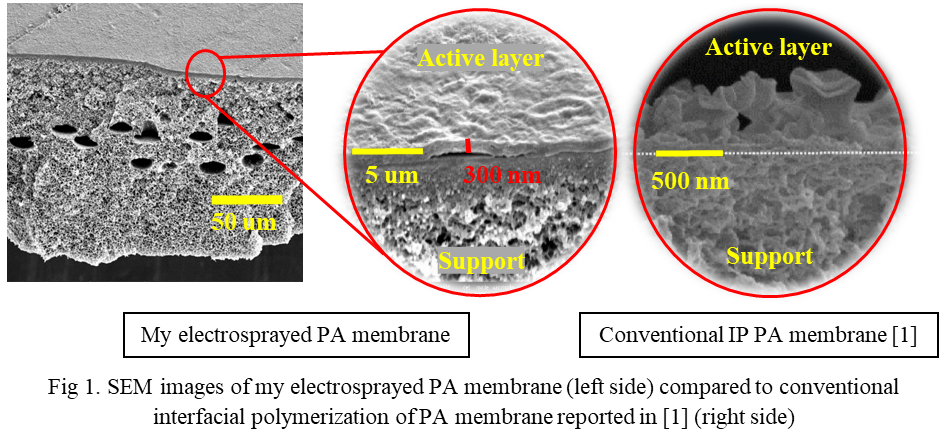(428e) Polyamide Thin-Film Composite Membranes for Gas Separations
AIChE Annual Meeting
2024
2024 AIChE Annual Meeting
Separations Division
Thin-Film Composite Membranes for Gas and Vapor Separations
Tuesday, October 29, 2024 - 4:54pm to 5:15pm
Membrane-based gas separation is being extensively investigated for its potential to reduce both operational (OPEX) and capital expenditures (CAPEX), along with a smaller footprint compared to conventional methods like cryogenic distillation. Inorganics like carbon molecular sieves and zeolites and glassy polymers like polyimides, polyamides, PIMs, and block copolymers are being studied. Polyamide-based membranes have been extensively used for reverse osmosis (RO) but have interestingly rarely been considered for gas separation membranes. A recent study with tighter polyamide membranes demonstrated its use for gas separation applications [1].
In this work, we utilize electrospray to form polyamide membranes for gas separations. This process generates nano-sized droplets using a high electric field, allowing precise layer thickness up to 10nm, to deposit an ultra-thin selective polyamide layer on commercial porous supports. Electrospray is a versatile method that allows for easy control of monomer chemistry and concentrations. The resulting membranes show improved selectivity over conventional RO polyamides and the potential to control permeance and selectivity through careful selection of monomers.
[1]. Z. Ali, et. al.,"Gas separation and water desalination performance of defect-free interfacially polymerized para-linked polyamide thin-film composite membranes, JMS, 2021(618), 118572.
